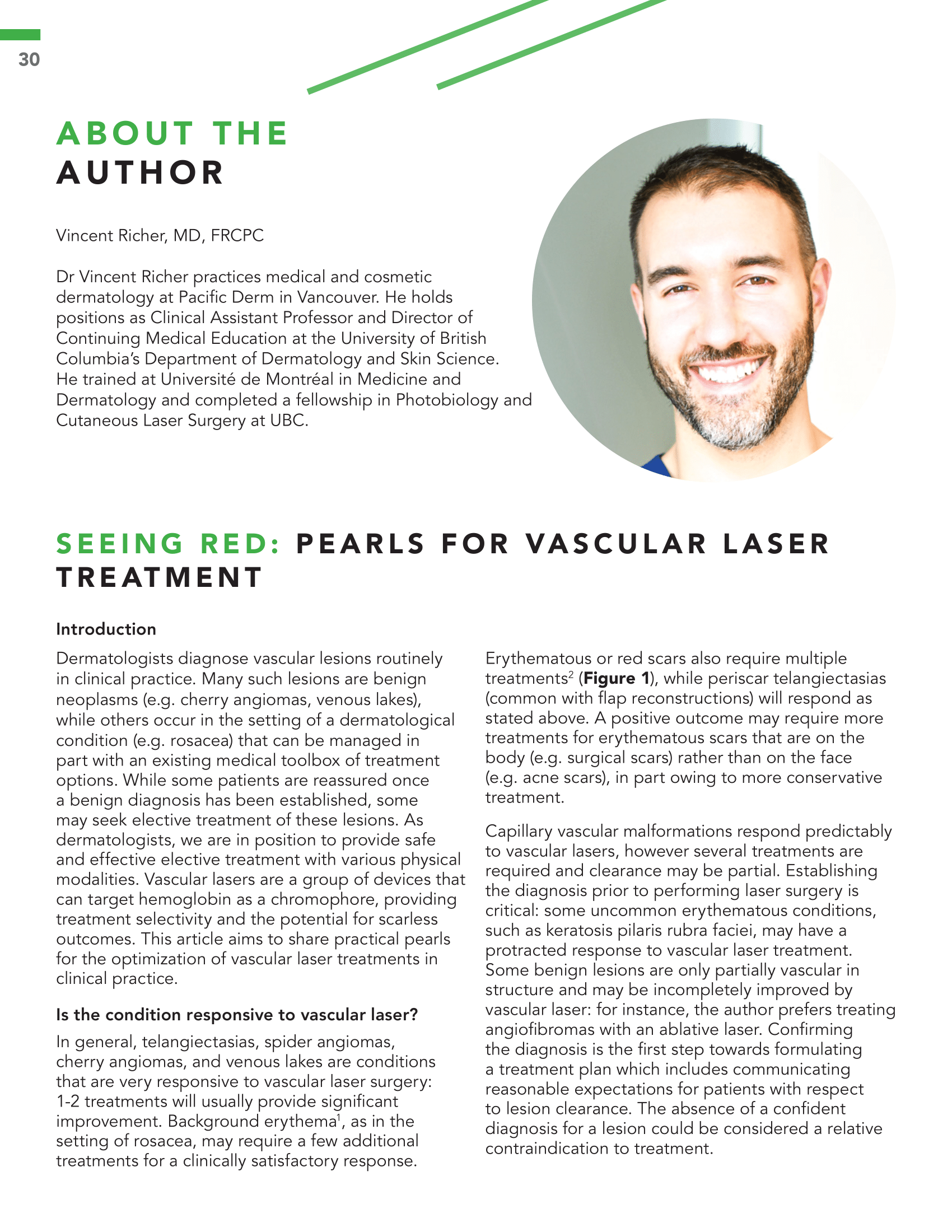Seeing red: pearls for vascular laser treatment
Abstract
Dermatologists diagnose vascular lesions routinely in clinical practice. Many such lesions are benign neoplasms (e.g. cherry angiomas, venous lakes), while others occur in the setting of a dermatological condition (e.g. rosacea) that can be managed in part with an existing medical toolbox of treatment options. While some patients are reassured once a benign diagnosis has been established, some may seek elective treatment of these lesions. As dermatologists, we are in position to provide safe and effective elective treatment with various physical modalities. Vascular lasers are a group of devices that can target hemoglobin as a chromophore, providing treatment selectivity and the potential for scarless outcomes. This article aims to share practical pearls for the optimization of vascular laser treatments in clinical practice.
References
Loyal J, Carr E, Almukhtar R, Goldman MP. Updates and Best Practices in the Management of Facial Erythema. Limmer EE, Glass DA. Clin Cosm Investig Derm. 2021;14:601-614.
Keaney TC, Tanzi E, Alster T. Comparison of 532 nm Potassium Titanyl Phosphate Laser and 595 nm Pulsed Dye Laser in the Treatment of Erythematous Surgical Scars: A Randomized, Controlled, Open-Label Study. Dermatol Surg 2016;42:70-76.
Anderson RR, Parish JA. Selective photothermolysis: precise microsurgery by selective absorption of pulsed radiation. Science. 1983;220(4596)524-7.
Adamič M, Pavlović MD, Troilius Rubin A, Palmetun-Ekbäck M, Boixeda P. Guidelines of care for vascular lasers and intense pulse light sources from the European Society for Laser Dermatology. J Eur Acad Dermatol Venereol. 2015 Sep;29(9):1661-78. doi: 10.1111/jdv.13177. Epub 2015 Apr 30
Waldman A, Bolotin D, Arndt KA, Dover JS, Geronemus RG, Chapas A, Iyengar S, Kilmer SL, Krakowski AC, Lawrence N, Prather HB, Rohrer TE, Schlosser BJ, Kim JYS, Shumaker PR, Spring LK, Alam M. ASDS Guidelines Task Force: Consensus Recommendations Regarding the Safety of Lasers, Dermabrasion, Chemical Peels, Energy Devices, and Skin Surgery During and After Isotretinoin Use. Dermatol Surg. 2017 Oct;43(10):1249-1262.
Wanner M et al. Immediate skin responses to laser and light treatments: Therapeutic Endpoints: How to obtain efficacy. J Am Acad Dermatol 2016; 74(5):821-33.
Wanner M et al. Immediate skin responses to laser and light treatments: Warning endpoints: How to avoid side effects. J Am Acad Dermatol 2016;74(5): 807-19.
Rohrer, Thomas E., Vandana Chatrath, and Vivek Iyengar. “Does pulse stacking improve the results of treatment with variable-pulse pulsed-dye lasers?.” Dermatologic surgery 30.2 (2004): 163-167.
Tran M, Richer V. Elective Treatment of Dermatosis Papulosa Nigra: A Review of Treatment Modalities. Skin Therapy Lett 2020;25(4)1-5.


